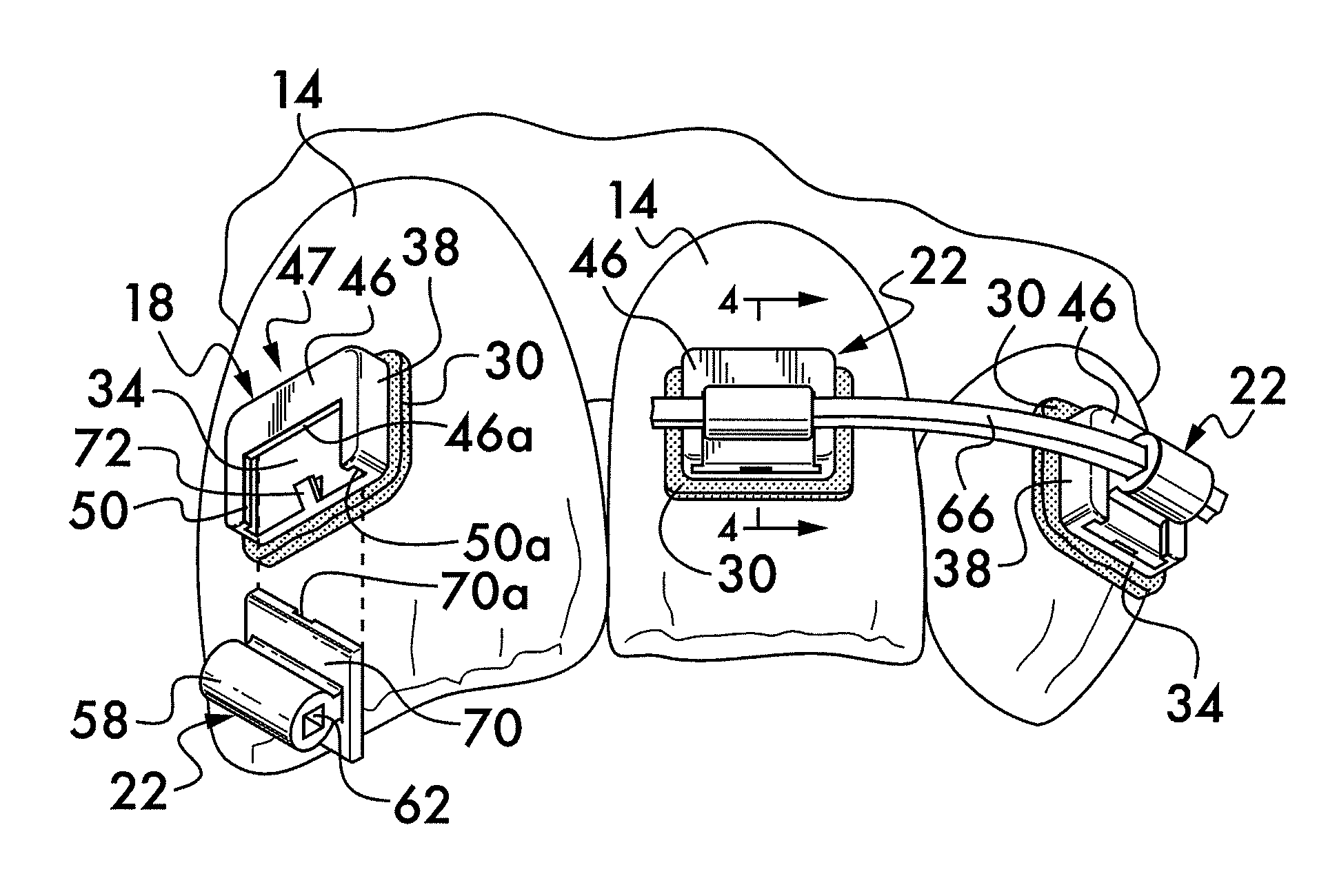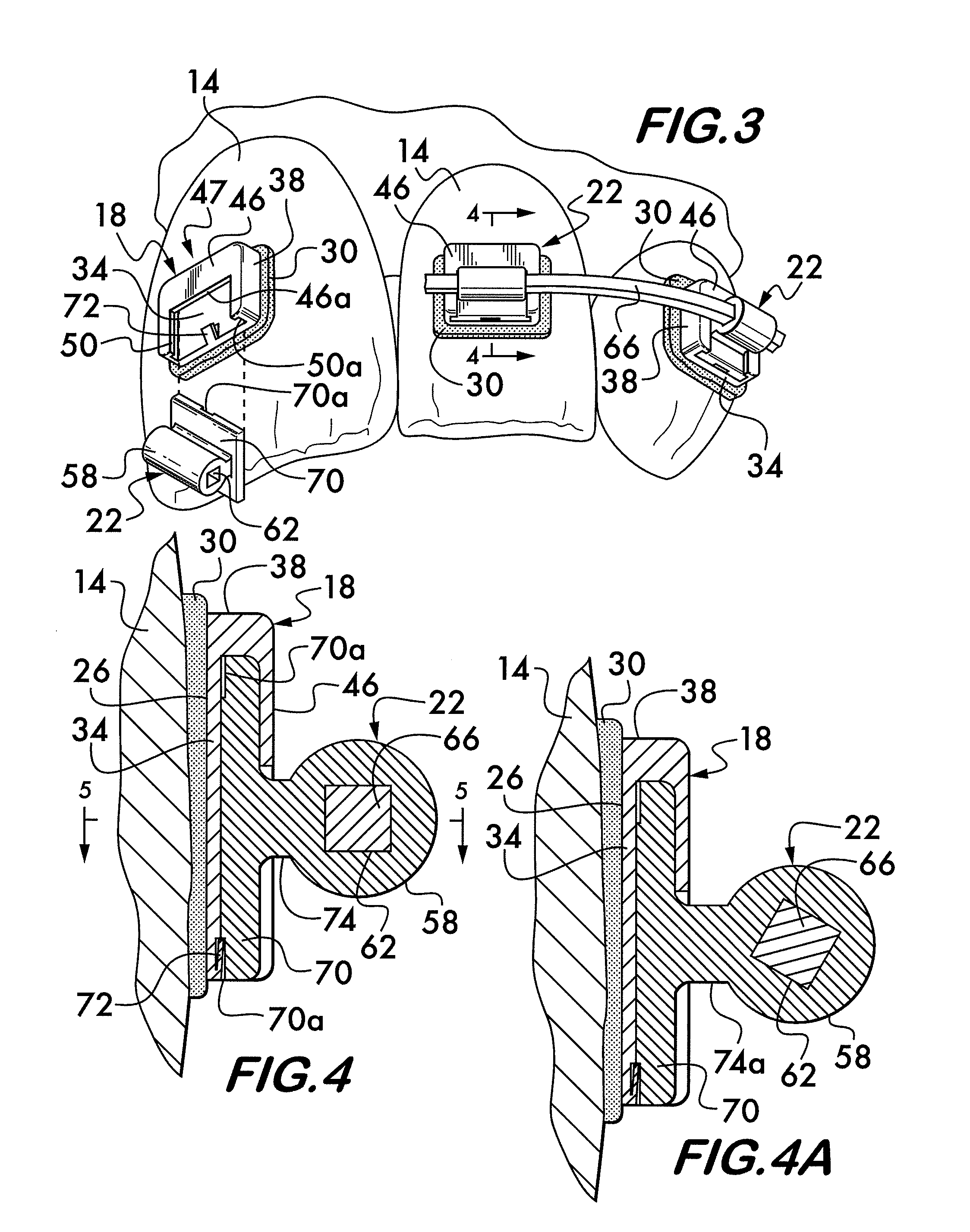Multi-component orthodontic bracket assembly
a bracket and multi-component technology, applied in the field of orthodontic brackets, can solve the problems of complex and time-consuming bracket repositioning or “replacement”, relatively the same kind of cost and discomfort, and the process is uncomfortable for the patient and is relatively costly
- Summary
- Abstract
- Description
- Claims
- Application Information
AI Technical Summary
Benefits of technology
Problems solved by technology
Method used
Image
Examples
Embodiment Construction
[0032]Referring now in detail to the various figures of the drawings wherein like reference characters refer to like parts, there is shown at 10 in FIGS. 1-3, a first embodiment of the present invention. The first embodiment includes a plurality of orthodontic brackets 10 bonded to the front surface of a plurality of adjacent teeth 14 of the maxilla, or upper jaw, of a patient, the teeth 14 requiring corrective orthodontic alignment. It should be understood that alternatively, the orthodontic brackets 10 of the present invention could be applied to adjacent teeth of the lower jaw, or of both the upper and lower jaws. Referring now to FIG. 3, each of the orthodontic brackets 10 is a multi-component system including a base component 18 adapted to be secured to the tooth and a bracket component 22 arranged to be retained within the base component 18.
[0033]Referring now to FIGS. 3-5, each base component 18 includes a back surface 26 which is arranged for attachment to a tooth 14 utilizi...
PUM
 Login to View More
Login to View More Abstract
Description
Claims
Application Information
 Login to View More
Login to View More - R&D
- Intellectual Property
- Life Sciences
- Materials
- Tech Scout
- Unparalleled Data Quality
- Higher Quality Content
- 60% Fewer Hallucinations
Browse by: Latest US Patents, China's latest patents, Technical Efficacy Thesaurus, Application Domain, Technology Topic, Popular Technical Reports.
© 2025 PatSnap. All rights reserved.Legal|Privacy policy|Modern Slavery Act Transparency Statement|Sitemap|About US| Contact US: help@patsnap.com



